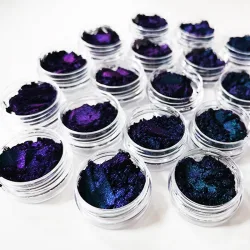Guide to Help You Choose Pigments for Gel Coats and Resins
2024-04-18
When choosing pigments for gel coats and resins, it's essential to select ones that are compatible with the specific materials you're working with and that will provide the desired color intensity and durability. Here's a guide to help you choose pigments for gel coats and resins:
1. Types of Pigments:
- Inorganic Pigments: These are often preferred for their excellent lightfastness and chemical resistance. Common inorganic pigments include titanium dioxide (white), iron oxides (red, yellow, black), and chromium oxide (green).
- Organic Pigments: These are synthetic pigments derived from organic compounds. They offer a wide range of vibrant colors but may not be as lightfast or chemically resistant as inorganic pigments. Organic pigments include phthalocyanine blues and greens, azo yellows and oranges, and quinacridone reds and violets.
- Pigment Dispersions: These are pre-dispersed pigments in a liquid carrier, making them easy to incorporate into gel coats and resins without the need for additional grinding or milling.
2. Color Matching:
- Choose pigments that will achieve the desired color when mixed with your gel coat or resin. Keep in mind that the color of the pigment may change when mixed with the clear resin or gel coat, so it's essential to test small batches first.
- Some manufacturers offer color charts or swatches to help you choose the right pigment for your project.
3. Compatibility:
- Ensure that the pigments you choose are compatible with the type of resin or gel coat you're using. Certain pigments may react with specific resins or affect curing times, so it's crucial to follow the manufacturer's recommendations.
- If you're unsure about compatibility, consider purchasing pigments specifically formulated for use with your resin or gel coat.
4. Particle Size:
- The particle size of the pigment can affect the color intensity and transparency of the final product. Finer pigments may produce more vibrant colors but can also result in a more translucent finish, while larger particles may create a more opaque appearance.
- Experiment with different particle sizes to achieve the desired color and opacity for your project.
5. UV Stability:
- If your project will be exposed to sunlight or outdoor conditions, choose pigments that offer excellent UV stability to prevent fading or discoloration over time.
- Titanium dioxide is often used in white pigments for its excellent UV stability, while certain organic pigments may require UV inhibitors for outdoor applications.
6. Safety Considerations:
- When working with pigments, follow safety guidelines provided by the manufacturer, including wearing appropriate protective equipment such as gloves, goggles, and a respirator if necessary.
- Ensure that the pigments you choose are suitable for your intended application and comply with any relevant safety regulations.
By considering factors such as pigment type, color matching, compatibility, particle size, UV stability, and safety, you can choose the right pigments for your gel coats and resin projects to achieve the desired results.



